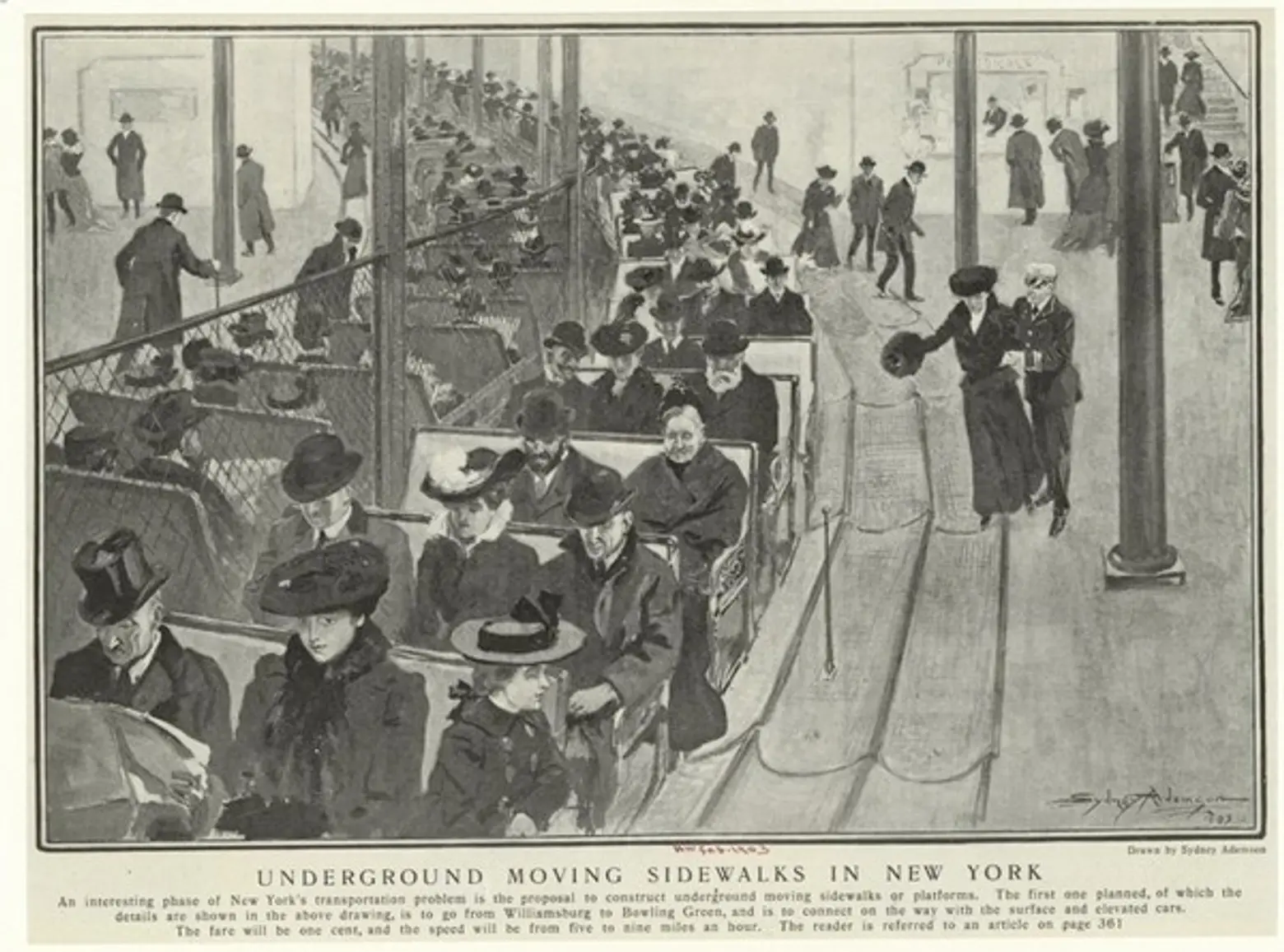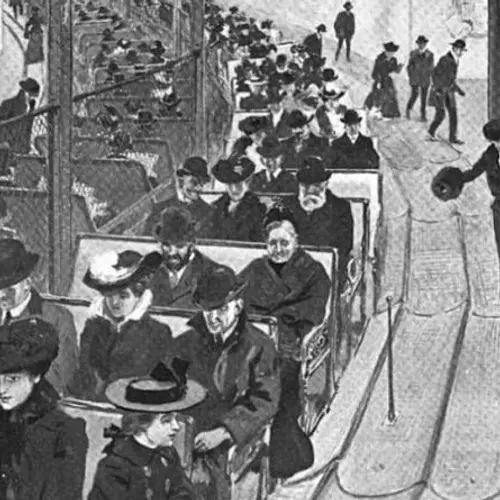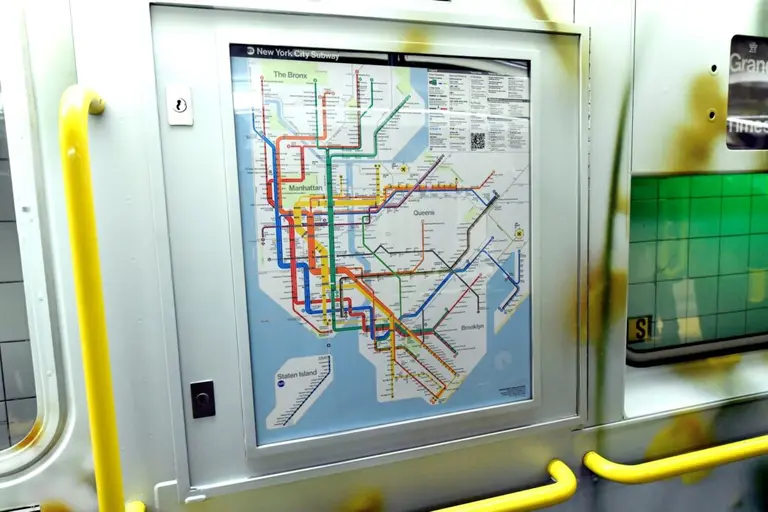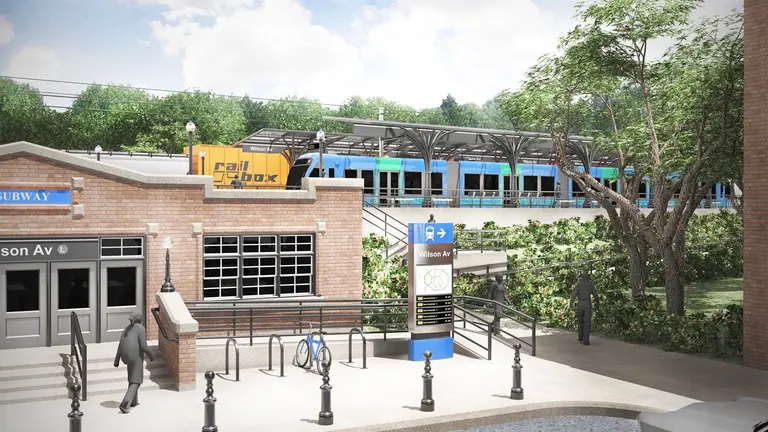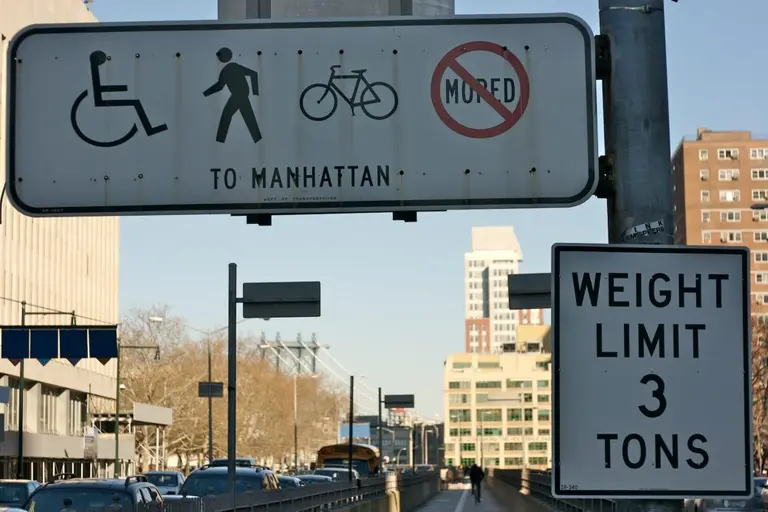Underground moving sidewalks were NYC’s transit plan of the future at the turn of the 20th century

Photos courtesy the New York Public Library’s Digital Gallery
As the city currently tackles a plethora of issues with its public transit system, New Yorkers have been presented with no shortage of innovations to make commuting (hopefully) better. Take a look back at the turn of the 20th century, though, and the moving sidewalk was considered the future of urban transportation. According to Gizmodo, “The moving sidewalk represented a bold new vision for tomorrow… This idea of rolling pavement appealed to people in major cities who didn’t yet see the rise of the automobile as inevitable and were looking for an affordable alternative to more elaborate infrastructure like subway trains.” In 1903, an article in Harper’s Weekly said that moving sidewalks were the perfect solution for the city to tackle congestion issues that would arise with new bridge connections bringing people from Brooklyn into New York City.
These 1903 images, drawn by Sydney Adamson, were presented as the transit dream for forward-looking New Yorkers. The moving sidewalk was envisioned as a loop of moving platforms running from Bowling Green at the bottom of Manhattan and then up the east side, connecting with the Brooklyn, Manhattan, and Williamsburg bridges. The system was to run in subway-like tunnels about 30 feet wide, with stations every two blocks along a six-mile loop. As CityLab broke it down, roughly 10,600 platforms would be needed for the system, arranged with three separate tracks. The proposal was for two stepping platforms, one running at 3 mph and the second at 6 mph, and a main platform with seating, to run no higher than 9 mph.
After that first ambitious loop, planners proposed more would be constructed throughout the New York area. This network of moving sidewalks would address a key issue for early 20th-century transportation planners: new congestion caused by massive crowds of people newly able to cross the East River.
Here’s a snippet from the 1903 Harper’s article:
The newest proposition to solve this problem is now before the Board of Estimate, which has referred it to the Rapid Transit Commission. It is popularly known by the misnomer, “Moving Sidewalks.” It is really a system of moving platforms or continuous trains. Men like [railroad magnate] Cornelius Vanderbilt, Stuyvesant Fish [president of the Illinois Central Railroad], E.P. Ripley [president of the Atchison, Topeka and Santa Fe Railway], and others are interested in the new plan, and the engineers not only pronounce it feasible, but extremely economical. The moving platform is simply the improvement of the continuous trains that were in operation at the Chicago and Paris Expositions, and that carried millions of people along at a good rate of speed and in absolute comfort without accident.
Later that year, the New York Times would go on to report concerns that constructing the moving sidewalks would be prohibitively expensive, requiring an unheard of 5-cent fare. Still, the rapid transit commission recommended: “immediate adoption” of the plan at a cost of $3 million. It obviously never happened–and there was suspicion that Brooklyn Rapid Transit helped bury the idea, as the company had a monopoly on the borough’s public transit.
The moving sidewalk eventually appeared at the World’s Columbian Exposition in Chicago in 1893, though it reportedly broke down often. An improved design showed up at the Paris Exposition Universelle in 1900, and from there the idea pretty much petered out. All that’s left of this grand vision of moving sidewalks shuttling New Yorkers from borough to borough? The underwhelming moving sidewalks at our local airports.
RELATED:
